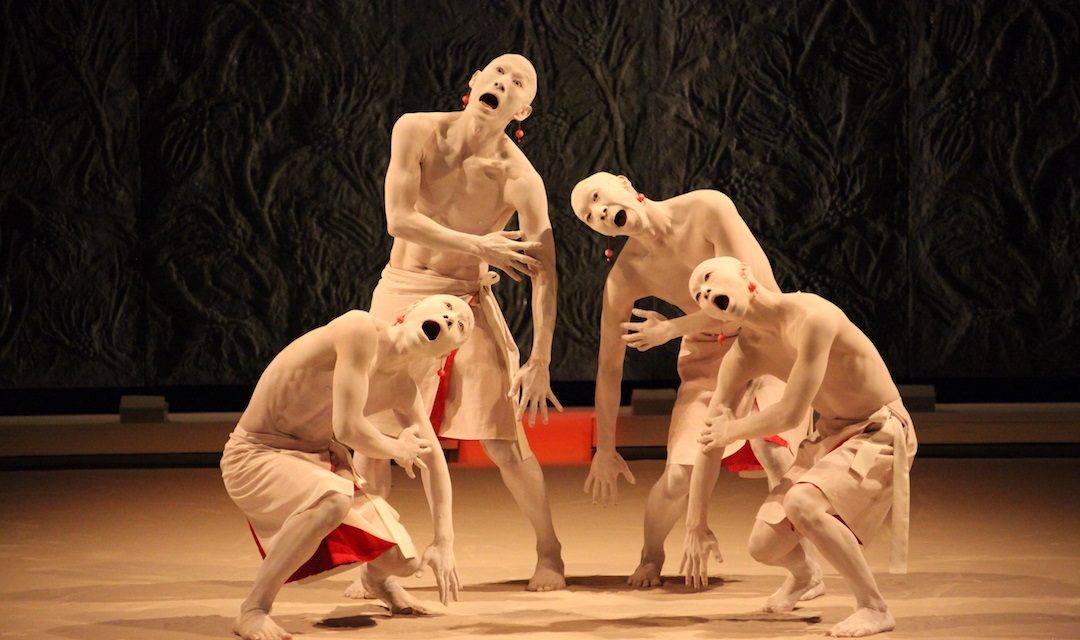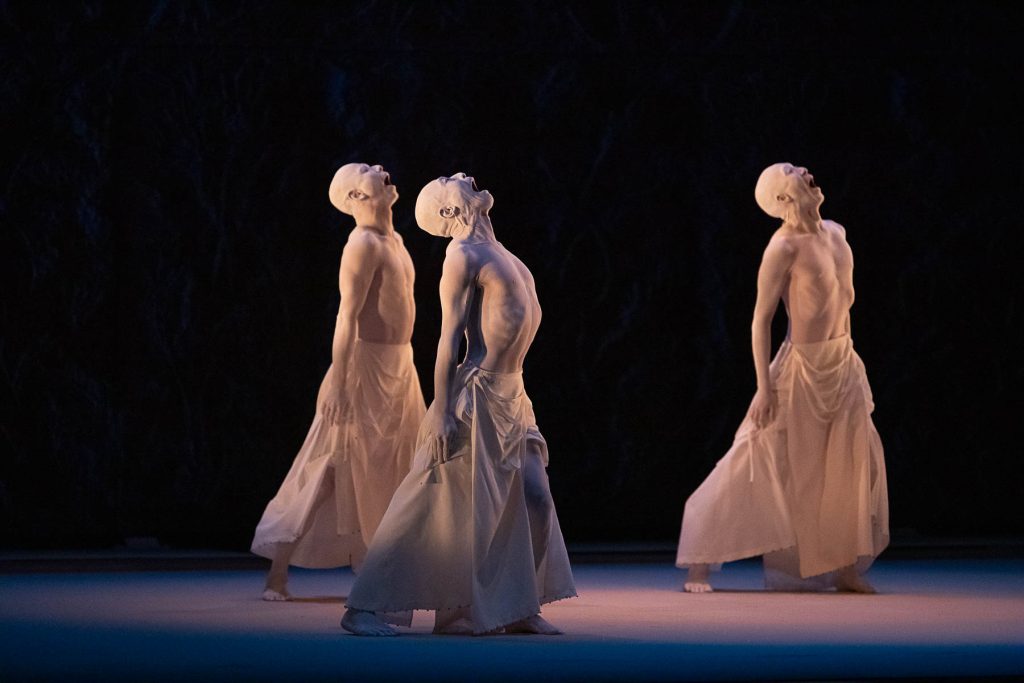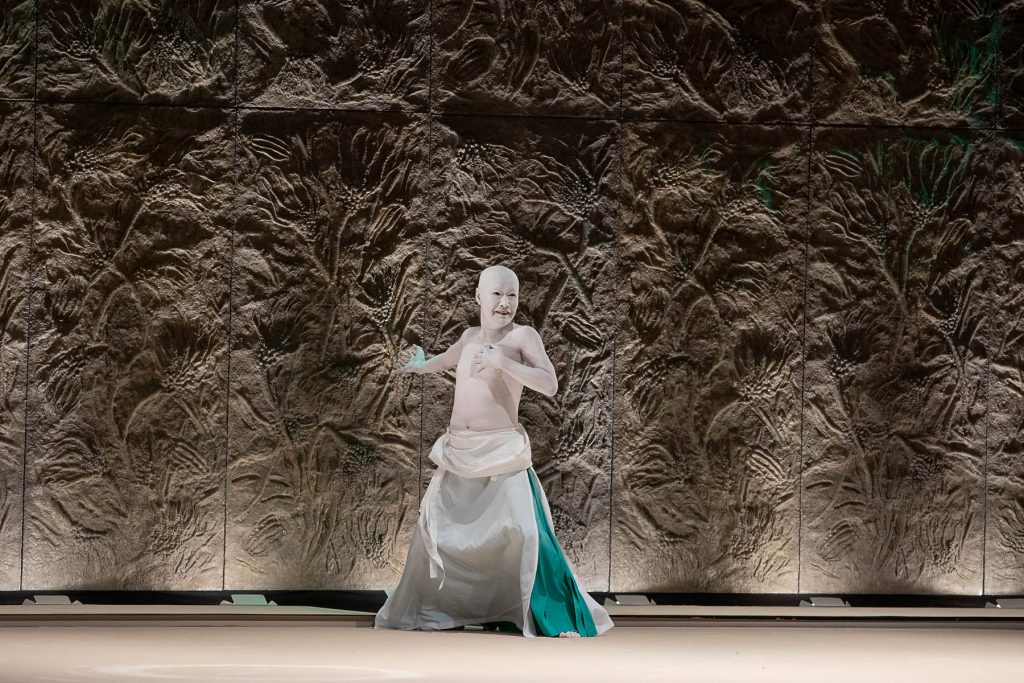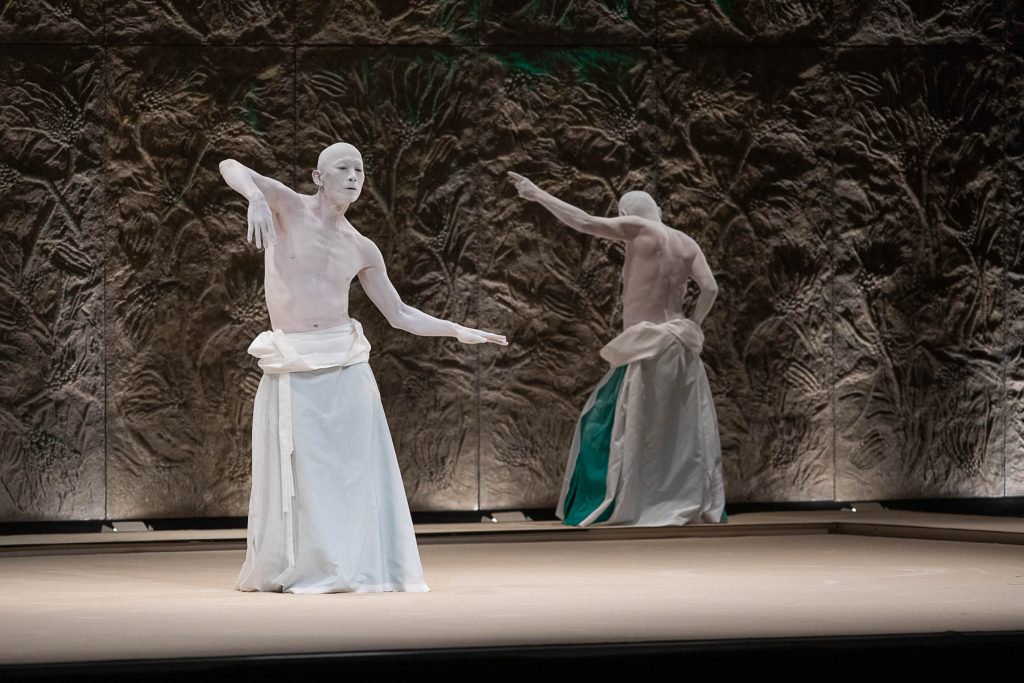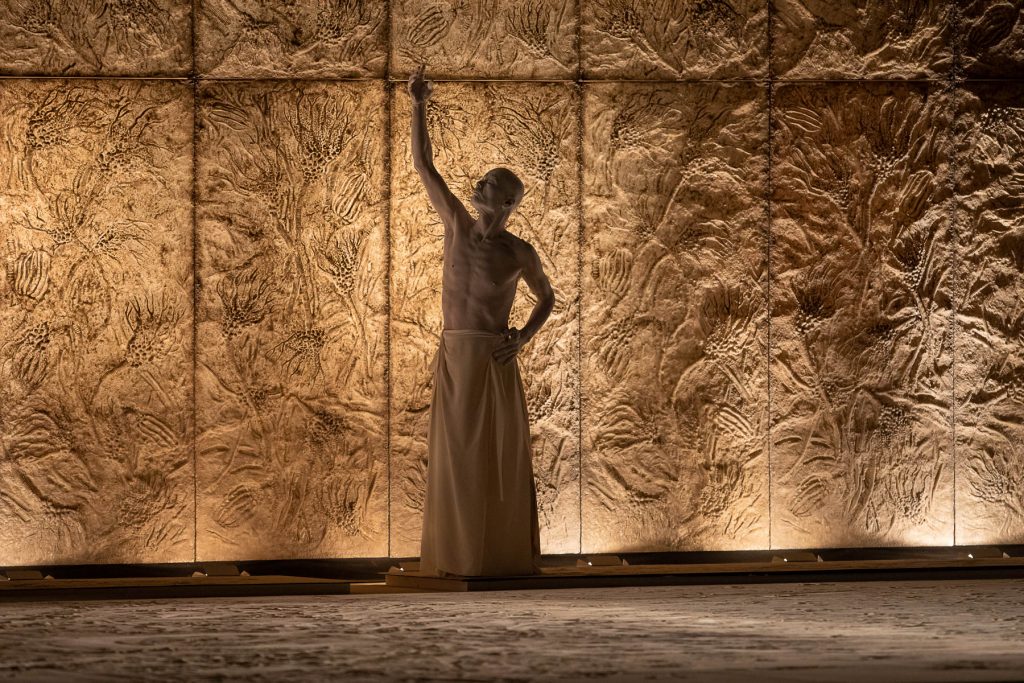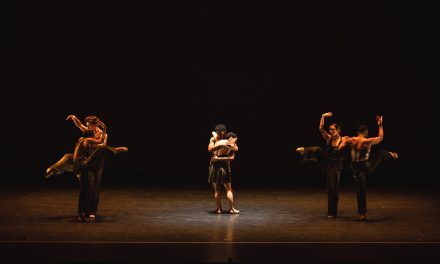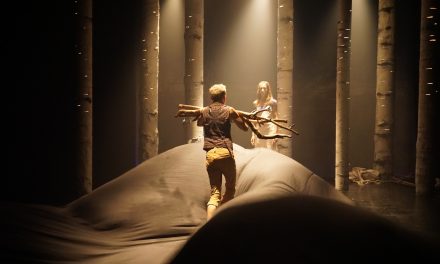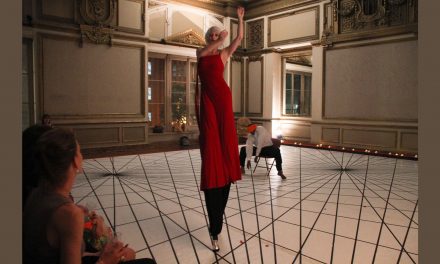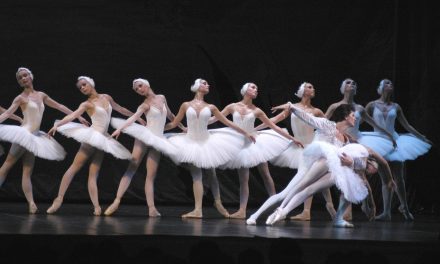Sankai Juku’s reputation in North America precedes it—almost a whispered legend among the ranks of UCLA’s Royce Hall, the company and its eight formidable members have not visited Los Angeles for at least four years. But the rumors could not come close to the exquisitely calculated grace they presented in “MEGURI—Teeming Sea, Tranquil Land” on Sunday, Oct. 6., presented by CAP UCLA. This visual poem, choreographed and designed by Sankai Juku artistic director Ushio Amagatsu, embodied the innate grandeur of nature through manipulations of time and space, in an otherworldly movement meditation.
Sankai Juku practices a movement language derived from the tradition of butoh, a form invented by partners Tatsumi Hijikata and Kazuo Ohno in 1959. The practice was a response to World War II, originally called ankoku-butō for “dance of darkness.” Its purpose: resistance, radical art for the sake of being radical. Hijikata especially aimed to depart from classical Western forms and embrace the grotesque; Ohno worked toward grounded and more natural movements.
Amagatsu co-founded seminal butoh company Dairakudakan in 1972, after coming to butoh in the 60s and training with Hijikata. A few years later, he departed to form Sankai Juku on his own, and since 1982 all Sankai Juku works have opened at Théâtre de la Ville, Paris. Perhaps that’s why he calls his practice “contemporary butoh,” affiliating the work with his mentors’ language but not limiting it to their philosophies. It does seem that Amagatsu’s work has been influenced by the most contemporary of European dance—but perhaps it has simply coincided with the more visceral forms making their way into the spotlight recently.
For those that have not seen butoh, I can describe it only through my western eyes as incredibly physical and incomparably patient. A large amount of the daily work is taxing and requires the most convinced commitment: Hijikata would induce extreme duress in order to reach the state he wanted to convey or master through his practice. Some tasks take a lifetime to accomplish, or by their very nature are never accomplished.
For this reason, the Sankai Juku cast averages a much higher age than the dance companies we’re used to seeing on the Royce Hall stage. These men—Semimaru, Toru Iwashita, Sho Takeuchi, Akihito Ichihara, Dai Matsuoka, Norihito Ishii, Shunsuke Momoki, and Taiki Iwamoto—are all quite dedicated to their craft, and that is obvious the moment they set foot onstage. Their powerfully calm control is mesmerizing, so much so that it lulls you into a state of focus, as though you are attempting butoh yourself. Yet they continue this focus without wavering for ninety minutes, no intermission. Throughout the program, Amagatsu compiles seven phases of natural time and space and demonstrates their tones slowly, deliberately, and consciously:
I, The Call from the Distance
II, Transformation on the Sea Bottom
III, Two Surfaces
IV, Premonition – Quietude – Tremblings
V, Forest of fossils
VI, Weavings
VII, Return
With help from ingenious lighting designers Genta Iwamura and Satoru Suzuki and costume designer Masayo Iizuka, Amagatsu creates a viewing platform that is sometimes two-dimensional, sometimes three, and sometimes four. Against a sea lily fossil backdrop created by designer Roshi, the depth of the men’s formations completely transforms the scope of the stage, toying with space. Butoh itself lends a hand to the subversion of time—again, patience is necessary virtue for these artists—slowing each movement into a hum until the fast movement hits you with a percussive strength. Music by Takashi Kako, YAS-KAZ, and Yoichiro Yoshikawa compliments this style well, weaving a dramatic thread into the choreography with the subtlest of notes.
The dancers’ movement is controlled, but not just in the sense that they fire strong muscles on the right count. This control is the result of an intensely profound focus, an endless stream of consciousness that glides through their every movement. They move softly and smoothly, but convey to you the understanding that they are the strongest men on earth. Their power is channeled into slow shifts of weight with the occasional swift step now and then; into incredibly deep lunges held without tremor; into theatrical displays of the face in universal expressions.
Phase VII, Return, allows design and practice to culminate in an inhuman state of flow. The men accomplish humanly impossible feats—balancing on their tailbones to float above ground with both legs and chest, transitioning from their feet to their knees without losing a single inch of height. By this point in the program, no doubt I was floating in the teeming sea along with them.
And then the bows: three curtain calls brought these movement masters back out onstage. Each time, they remained focused, unwavering, stoic. And though I had drifted through the journey of Meguri with them, it was only during their bow that I began to grasp the daily diligence that must have brought them to this point. These men were lifetime practitioners, committed to their research like nothing I had ever seen. And though the devotion may seem monumental, it is absolutely worth it for a form like this, utilized in a production like Amagatsu’s. Make a point to see Sankai Juku the next time they visit North America; they don’t come often, but this quiet strength is not to be missed.
Written by Celine Kiner for LA Dance Chronicle, October 8, 2019.
For CAP UCLA 2019-2020 performance season, click here.

